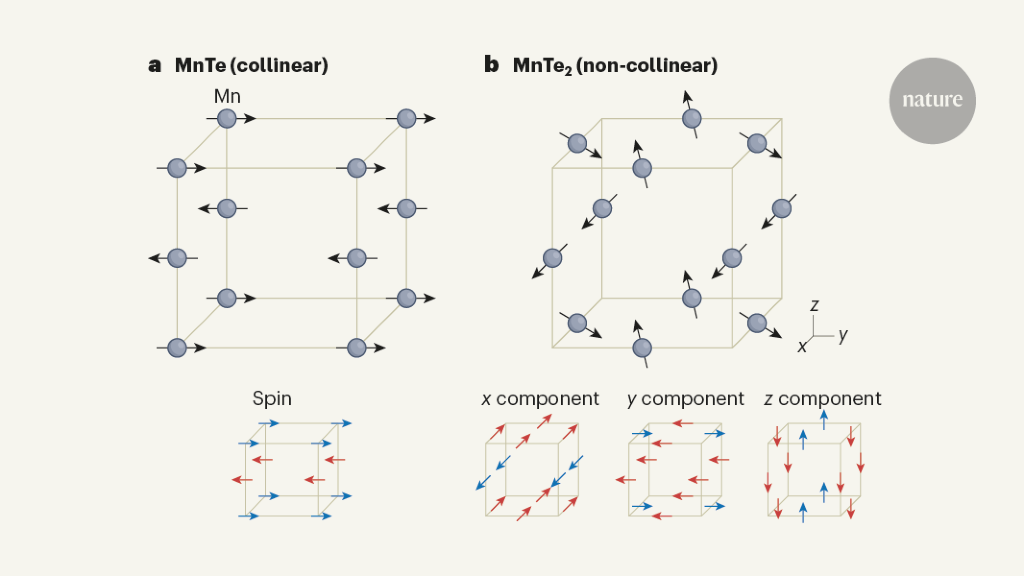Understanding Spin Splitting in Altermagnetism
Core Concepts
The authors present experimental evidence of spin splitting in materials classified as altermagnets, suggesting potential advantages over traditional ferromagnets for certain technological applications.
Abstract
Electrons in materials have energies confined to specific levels that can split into bands corresponding to their intrinsic angular momentum, known as 'spin.' This spin splitting is crucial for the existence of ferromagnetism, commonly found in iron. Recently, a new type of magnetism called altermagnetism has been discovered, and it is predicted to exhibit similar spin splitting properties. Two papers published in Nature by Krempaský et al. and Zhu et al. provide experimental proof of spin splitting in materials categorized as altermagnets. These findings hint at the potential superiority of altermagnets over ferromagnets for various technological applications.
New type of magnetism splits from convention
Stats
The energies of electrons in a material are confined to specific levels.
Spin splitting underlies the existence of ferromagnetism.
Materials showing altermagnetism have been predicted to exhibit spin splitting.
Experimental evidence of spin splitting was reported in materials classified as altermagnets.
Quotes
Key Insights Distilled From
by Carmine Auti... at www.nature.com 02-14-2024
https://www.nature.com/articles/d41586-024-00190-w
Deeper Inquiries
How does the discovery of altermagnetism impact current theories on magnetism
The discovery of altermagnetism challenges current theories on magnetism by introducing a new type of magnetic behavior that differs from traditional ferromagnetism. Altermagnets exhibit spin splitting, similar to ferromagnets, but with distinct properties and potential applications. This discovery expands our understanding of the underlying mechanisms governing magnetism in materials and opens up new avenues for research into unconventional magnetic phenomena.
What are the potential drawbacks or limitations of using altermagnets over traditional ferromagnets
While altermagnets offer unique characteristics and potential advantages over traditional ferromagnets, there are also drawbacks and limitations to consider. One limitation is the relatively nascent stage of research on altermagnetism compared to well-established knowledge about ferromagnetic materials. This lack of extensive data and understanding could hinder the practical implementation of altermagnets in technological applications. Additionally, the stability, scalability, and compatibility of altermagnetic materials with existing technologies may pose challenges that need to be addressed before widespread adoption can occur.
How can understanding spin splitting in different types of magnetism lead to advancements in technology beyond magnetic applications
Understanding spin splitting in different types of magnetism not only enhances our fundamental knowledge of material properties but also paves the way for significant advancements in technology beyond magnetic applications. By exploring how spin configurations influence electronic behaviors in various magnetic systems like altermagnets, researchers can develop novel approaches for controlling electron spins at nanoscale levels. This insight has implications for quantum computing, spintronics, and other emerging fields where manipulating electron spins is crucial for achieving higher performance and efficiency in electronic devices. The exploration of spin splitting in diverse magnetically ordered materials could lead to breakthroughs in information storage, sensing technologies, energy-efficient electronics, and even quantum communication systems.
0
